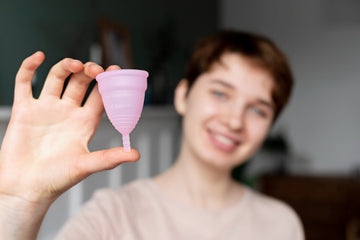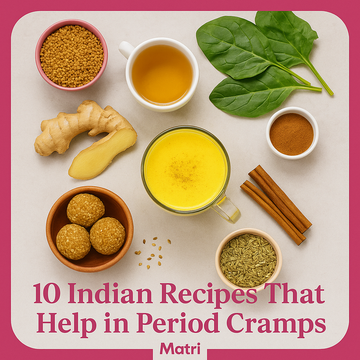Choosing the right menstrual product is a big decision for many women. With increasing awareness and options, menstrual cups have become a popular choice for those seeking a sustainable and cost-effective alternative to pads and tampons. However, like any other product, menstrual cups come with their own advantages and disadvantages. This article explores the pros and cons of menstrual cups in detail, along with tips for users with sensitive skin, things to know before using them, and a comparison with tampons to help you decide if it’s the right fit for you.
What is a Menstrual Cup?
A menstrual cup is a small, flexible cup made of medical-grade silicone, rubber, or latex that is inserted into the vagina during menstruation to collect menstrual fluid. Unlike pads or tampons, which absorb fluid, the cup collects it. Once full, it needs to be removed, emptied, rinsed, and reinserted.
Pros of Using a Menstrual Cup
1. Cost-Effective in the Long Run
Although the initial purchase price of a menstrual cup might be higher than a pack of pads or tampons, one cup can last up to 10 years with proper care. This makes it a significantly cheaper option over time, reducing monthly expenses on menstrual products.
2. Environmentally Friendly
Menstrual cups are reusable, which drastically reduces waste compared to disposable pads and tampons. A single user can save hundreds of disposable products from going to landfills throughout her lifetime.
3. Fewer Changes Needed
A menstrual cup can hold more fluid than a tampon or pad, allowing for longer wear — up to 12 hours in some cases. This is particularly beneficial for overnight use or during travel.
4. Lower Risk of Toxic Shock Syndrome (TSS)
While still a risk, the chances of developing TSS with menstrual cups are much lower than with tampons. This is mainly because menstrual cups don’t absorb menstrual fluid but collect it, reducing bacterial growth.
5. Ideal for Sensitive Skin
Women with sensitive skin often react to the chemicals, fragrances, or materials used in pads and tampons. A menstrual cup for sensitive skin, made of medical-grade silicone, is hypoallergenic and less likely to cause irritation.
Cons of Using a Menstrual Cup
1. Learning Curve
Using a menstrual cup requires a bit of practice. Inserting and removing it correctly may take a few cycles to get used to, and some users may find it uncomfortable initially.
2. Messy Removal Process
Removing and emptying the cup can be messy, especially in public restrooms where rinsing might not be convenient. This can deter new users or those with busy lifestyles.
3. Fit and Sizing Issues
Finding the right size is essential for comfort and effectiveness. Women with a low cervix or certain medical conditions may struggle to find a good fit without trial and error.
4. Not Suitable for All Activities or Conditions
While generally secure, some users report slight leakage during intense physical activity if not positioned correctly. Also, not all gynecological conditions are compatible with cup use, so consulting a healthcare provider is wise.
Menstrual Cup for Sensitive Skin: What to Consider
If you have a history of allergic reactions or vaginal irritation, opting for a menstrual cup for sensitive skin is advisable. Look for products made from 100% medical-grade silicone without dyes or fragrances. Make sure to clean the cup with a mild, unscented cleanser and sterilize it between cycles to prevent bacterial buildup.
What to Know Before Using a Menstrual Cup
Before making the switch, here are a few essential things to consider:
Understand Your Anatomy: Knowing the position of your cervix can help choose the right size and shape of the cup.
- Sterilization is Crucial: Boil the cup before and after your period to maintain hygiene.
- Insertion and Removal Take Time: Don’t get discouraged if it feels odd at first. Practice makes perfect.
- Check for Comfort: If it feels uncomfortable or causes pressure, it might be the wrong size or inserted incorrectly.
Menstrual Cup Benefits and Side Effects
Benefits:
- Reduces monthly costs
- Minimizes waste
- Long-wear time
- Fewer odor concerns due to less exposure to air
- Less vaginal dryness than tampons
Side Effects:
- Possible initial discomfort
- Potential leakage if not sealed properly
- Rare risk of infection if not cleaned thoroughly
- Some users may experience increased cramps
Understanding both the menstrual cup benefits and side effects will help you make an informed decision tailored to your comfort and health needs.
Is a Menstrual Cup Better Than Tampons?
When comparing, many find menstrual cups more economical, eco-friendly, and comfortable over time. They offer longer wear and fewer replacements. However, tampons may be more convenient for beginners due to ease of use and less maintenance. The answer depends on personal preference, comfort, and lifestyle. If you prioritize sustainability and cost-efficiency, the menstrual cup is likely the better option.
FAQs
1. Can I use a menstrual cup if I have sensitive skin?
Yes. Menstrual cups made from medical-grade silicone are usually safe for sensitive skin. They are free from harsh chemicals, fragrances, and dyes, reducing the risk of irritation. Be sure to choose a reputable brand and clean your cup properly after every use.
2. Is it hard to learn how to use a menstrual cup?
Using a menstrual cup has a learning curve. It might take a few menstrual cycles to feel comfortable with insertion and removal. Watching tutorials and practicing different folding techniques can help improve your experience over time.
3. Is a menstrual cup better than tampons?
Yes. For many users, menstrual cups provide longer protection, reduce costs, and are better for the environment. However, tampons may still be preferred for their ease of use, especially in public settings or during travel.
4. How often should I empty a menstrual cup?
Typically, you should empty your menstrual cup every 8 to 12 hours. However, during heavy flow days, you may need to do it more often. Always follow the manufacturer's guidelines to ensure safe usage.
5. Can menstrual cups cause infections?
Improper cleaning or leaving a cup in for too long can increase the risk of infections. However, when cleaned and used correctly, menstrual cups are safe and do not cause infections more than other menstrual products.
6. Do menstrual cups reduce period odor?
Yes. Menstrual cups collect rather than absorb menstrual fluid, minimizing its exposure to air. This significantly reduces the odor that is often experienced with pads or tampons.
7. Are menstrual cups suitable for teenagers?
Yes. Many brands offer smaller sizes specifically designed for teens. With the right guidance and practice, menstrual cups can be a safe and economical choice for younger users.
8. Can you sleep with a menstrual cup in?
Yes. Menstrual cups can be worn overnight for up to 12 hours, making them a convenient option for uninterrupted sleep. Always make sure it’s inserted properly to avoid leaks.
9. Will a menstrual cup stretch out the vagina?
No. A menstrual cup will not stretch out the vagina. The vaginal muscles are very elastic and return to their original shape after use. The cup is designed to fit comfortably without causing lasting changes.
10. Is it okay to use a menstrual cup if I have an IUD?
Using a menstrual cup with an IUD is generally safe, but care must be taken during removal to avoid dislodging the device. It’s best to consult your gynecologist before combining both to ensure proper safety.






